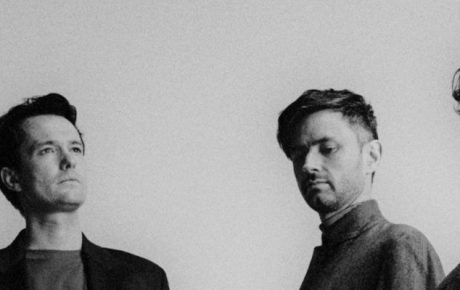Legend Amy Winehouse is a muse yet again, once more this time to the silver screen, with director Sam Taylor-Johnson’s tribute to the late singer with the biographical drama Back to Black.
The film explores Amy’s life and rise to fame with a distinct dive into the inspiration behind her highly regarded final studio album of the same title. Back to Black stars actress Marisa Abela as Amy in performance and vocal talent – the studio recordings for which the film reunited Amy Winehouse’s original band to create. This watch follows Amy from the haven of her teenage bedroom at her mum’s to the tumultuous extravagance of hotel rooms in Miami and from the dive bars of Camden to the studio scenes of New York City.
Here are five takeaways from Back to Black that have reminded us of what we love about the late and great Amy Winehouse.
Note: the following article may contain spoilers from the film
HER LYRICAL HONESTY
Back to Black doesn’t shy away from demonstrating Amy’s lyrical honesty and the core authenticity of her emotional and beautifully blatant confessional style. Music industry veteran Mark Ronson has often publicly heralded his production sessions with Amy, particularly on title track ‘Back to Black’ in a 2015 interview with The FADER he recounted:
“Amy was so serious about her words. Working on “Back to Black”, when she first sang the chorus, she said, “We only said goodbye in words/ I died a hundred times.” My producer instinct went off and I said, “Hey, sorry, it’s got to rhyme. That’s weird. Can you fix that?” And she just looked at me like I was crazy, like, “Why would I fix that? That’s what came out.” They’re some of the most unlikely lyrics you could ever imagine on a massive pop single.”
Amy’s inherent dedication to her truths is depicted throughout the entirety of Back to Black, with heartfelt sentiments like “I need to live my songs,” and “I don’t know what I’d do if I didn’t write songs,” alongside verbatim assertions made by Amy that she’s “got to make something good out of something bad.”
HER CONNECTION TO HER ROOTS
Back to Black’s storytelling conveys the compelling grounding and potency of Amy’s connection to her roots. The film centralises the relationship Amy had with her nan, Cynthia Winehouse, as a core stabilising and inspirational centre to her life.
The kindred songbirds are embodied in metaphor by scenes capturing intimate peripheral shots of a feathered companion in both free and captive moments throughout. In fact, there are countless nods to the special bond between the two – from the more obvious recreation of Amy’s ‘Cynthia’ tattoos to scenes that take place at Jazz legend and Cynthia’s ex-lover Ronnie Scott’s live music venue.
Expanding on the importance of familial influence on Amy’s life, Back to Black doesn’t shy away from entrenching the geographic cultural influence of Camden on Amy’s art and identity. Amy is Camden through and through – she’s synonymous with the locality and soul of her homeplace, and this film indisputably cultivates that sense of belonging to viewers who are longtime fans or newbies alike.
HER LEGACY / THE PLACE SHE FORGED IN THE INDUSTRY
By following her path to fame, Back to Black holds strong in the fact that Amy was a force in the industry, and has undoubtedly made her mark from the inside just as much as she did on the out. We see from the beginning of her career Amy was unphased by the glitz and glam of record pitches and refused to be shoehorned into traditional feminine confines of stardom (as seen with her repeated overt rejection of becoming a Spice Girl).
Back to Black truly showcases Amy as “an old school girl living now,” tying in the vibrant musicality of the jazz genre and the girl groups of the 60s as inextricable from her soul and artistry. Iconic names like Lauryn Hill, Sarah Vaughn, and Dinah Washington are but a few legends whom Amy has cited as key players in paving the path – through art, action, and inspiration, to what she creates.
HER SELF-ASSURANCE
Abela’s performance is to be applauded for conveying Amy’s unmistakable self-assurance in every facet of Amy’s connection to the world – to people, both loved ones and strangers. Back to Black also painfully encapsulates the complex coexistence of the confidence and vulnerability that love inspires, particularly in romantic relationships. Witnessing Amy’s tumultuous affair with Blake, her dedication is palpable. It is admirable yet tragic, as Amy always is bodying a genuinity that is unreciprocated, with an intrinsic ability to polish brass to gold with her most raw and honest musings.
THAT ARTISTS ARE REAL PEOPLE (WITH REAL STRUGGLES)
Back to Black also offers a candid exhibition of what we know to be true: that celebrity throws real people into both the pressure cooker and under the microscope, gamifying debilitating struggles in the public arena. In this film, we gain a slight insight into the claustrophobia of media presence during the coinciding of Amy’s stardom and the historical peak of the monopolised era of paparazzi and tabloids over popular culture journalism.
Something to note is that Back to Black does make reference to substance use and abusive relationship dynamics. However, that is also to say that a depiction of these themes does not deny Amy of the heart and humanity that she is known and loved for. Back to Black offers a representation of Amy that situates human struggle at it’s most heartbreaking and heartfelt, contributing to the culture of media semblances that seek to honour the musical legend.












